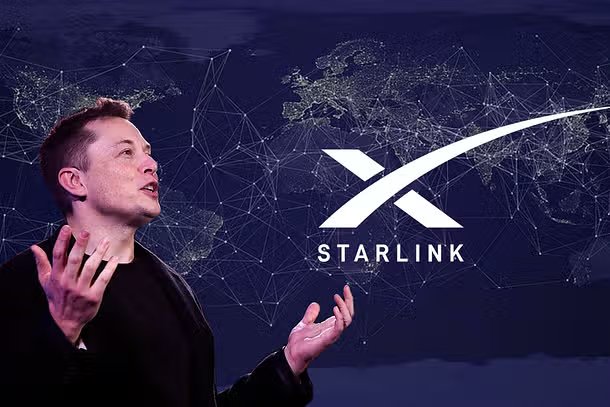Elon Musk’s Starlink Launches 24 Satellites for Global Internet
In a groundbreaking achievement for global connectivity, Elon Musk’s Starlink has successfully launched 24 additional satellites into Earth’s orbit. This bold move is a huge leap forward in Starlink’s mission to provide reliable, high-speed internet access to even the most remote corners of the world. The revolutionary effort aligns with SpaceX’s vision of bridging the digital divide, and its latest milestone has tech enthusiasts and industry experts buzzing with excitement.
Alongside these impressive satellite launches, questions about how this development will shape the future of global Internet are stacking up. Let’s dive deeper into what this ambitious step means for the world and how Starlink continues to transform the digital landscape.
What is Starlink and Why Is It Important?
Starlink, a subsidiary of Elon Musk’s aerospace giant SpaceX, is a satellite-based internet constellation that aims to deliver reliable and affordable broadband worldwide. The project has been under development since 2015, with the goal of solving the problem of limited internet connectivity in underserved regions. By using cutting-edge Low Earth Orbit (LEO) satellites, Starlink minimizes latency and boosts connection speeds compared to traditional geostationary satellites.
Its importance lies in the ability to connect billions of people who currently lack access to stable internet. For rural communities, remote areas, ships, airplanes, and even disaster-stricken zones, Starlink has the potential to be a game-changer.
How Do the 24 New Satellites Fit Into Starlink’s Vision?
With the launch of these 24 new satellites, Starlink is one step closer to completing its initial goal of deploying thousands of interconnected satellites. According to recent news from Riazor, the satellites were successfully launched into orbit from SpaceX’s Falcon 9 rocket. Each new batch enhances Starlink’s global network, reducing coverage gaps and improving bandwidth for existing customers.
The continuous growth of this network underscores Elon Musk’s visionary approach to bringing global Internet to underserved areas, ensuring that connectivity becomes a universal right rather than a privilege for the few.
Key Advantages of Starlink’s Global Internet
The idea of high-speed global internet is appealing, but what does Starlink uniquely bring to the table? Let’s examine the core benefits:
- Low Latency: Unlike traditional satellites placed far in space, Starlink’s satellites orbit closer to Earth, making internet speeds much faster and responsive.
- Accessibility: Rural and remote regions, where traditional ISPs don’t operate, gain access to reliable internet for education, business, and healthcare.
- Scalability: With thousands of satellites planned, Starlink’s internet coverage can effectively scale to meet growing demands globally.
- Rapid Deployment: Since it leverages satellite technology, Starlink’s infrastructure doesn’t rely on the challenging setups of ground-based fiber optics.
As Starlink scales up operations, it is setting a benchmark for the next generation of internet service providers. However, while the project is exciting, it does bring its share of challenges and controversies.
Challenges and Controversies Surrounding Starlink’s Satellite Launches
Despite its groundbreaking technology, Starlink has faced criticism over a range of issues. Astronomers have raised concerns about the satellites contributing to light pollution, potentially interfering with scientific research and telescopic observations. Furthermore, there are worries about the long-term risks of space debris as thousands of satellites are deployed into orbit.
Additionally, competitors and traditional ISP companies have questioned whether satellite-based internet can match fiber-optic capabilities in urban areas and at scale. Critics also cite affordability as another challenge, as the hardware cost for Starlink’s equipment could be prohibitively expensive for low-income households.
Nevertheless, these challenges are unlikely to derail Elon Musk’s ambitious timeline. Starlink continues to innovate and test solutions for these setbacks while remaining steadfast in its mission.
What’s Next for Elon Musk’s Starlink Project?
Looking ahead, Starlink intends to increase its constellation size, aiming to include up to 42,000 satellites over the next decade. This massive expansion is predicted to significantly improve internet availability and reliability worldwide, making 24-hour global connectivity a reality.
Elon Musk has also hinted at integrating Starlink into Tesla cars and even using the technology to supply stable internet access to Mars in his long-term plans for colonizing the Red Planet. While these futuristic visions remain a work in progress, they demonstrate the far-reaching potential of Starlink’s groundbreaking satellite network.
Internal Link: Stay Updated with the Latest News
For more updates on latest innovations, tech news, and Elon Musk’s ambitious ventures, visit ZexNews to stay informed.
The future is undoubtedly digital, and projects like Starlink are redefining what’s possible. As global internet connectivity morphs from a luxury to a necessity, the world is watching to see how far-reaching and inclusive this technology will be.
“`





